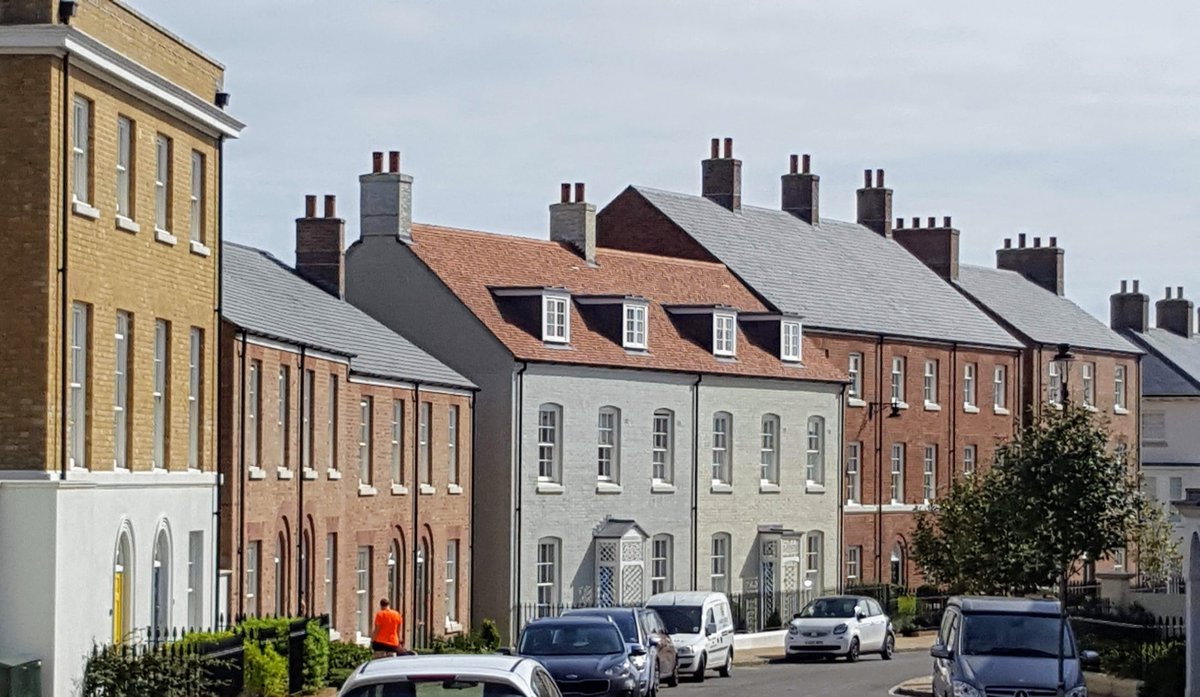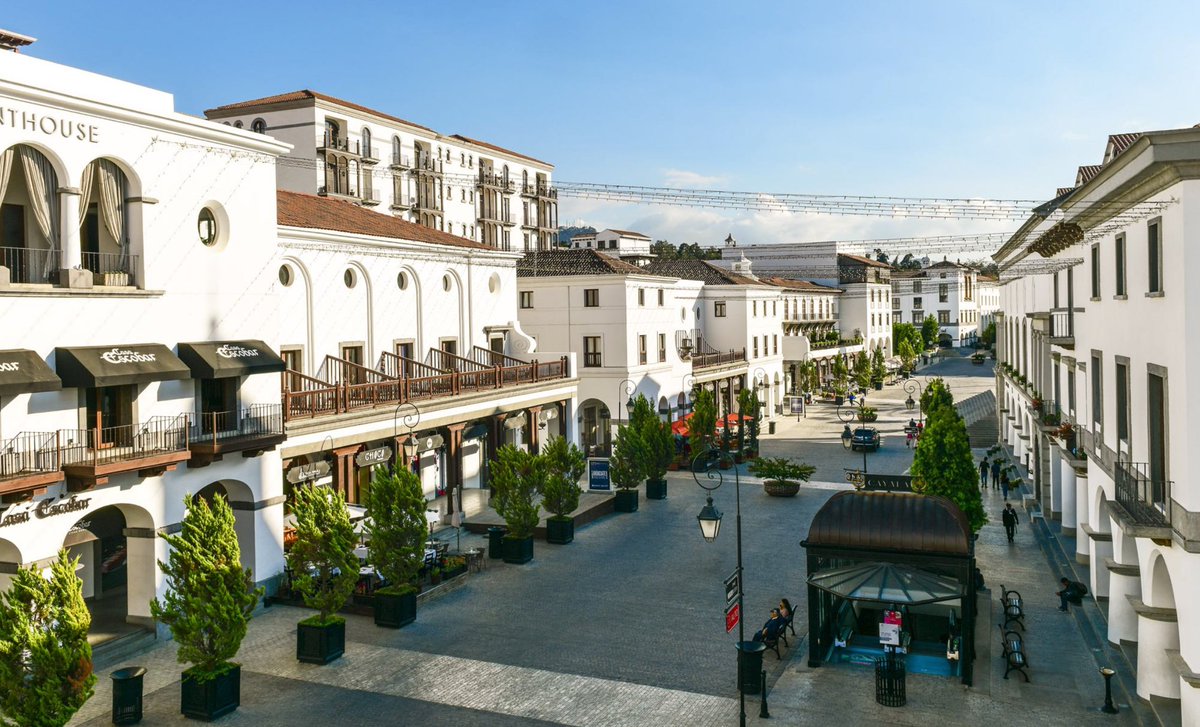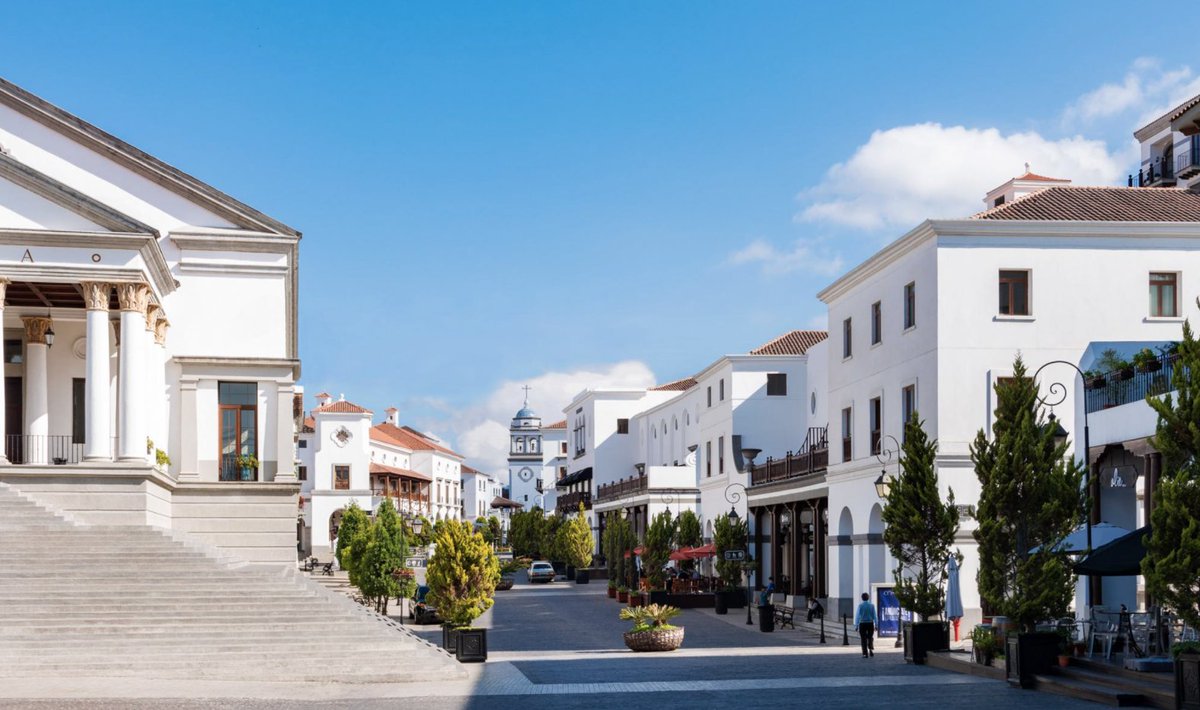
From my trip to Poundbury last year with @bswud and @He10ise. It is obviously imperfect, and has to some extent been superseded. But it is no less obviously a gigantic improvement on existing practice. It has also improved over time, a point that is not generally appreciated. 







Note attention to detail: ground-floor walls between houses to strengthen the street line; regulated shop signage, rare outside France and Italy; lamps often fastened to buildings rather than cluttering streets; blind windows, for which my fondness is well known. 







Some limitations were perhaps difficult to avoid: although it is higher density than usual for a suburban housing estate, it is still low by historic standards; and although it is delightfully walkable, most residents still rely on cars to travel elsewhere.
It is also true that there is too much stylistic variation, that the street plans of the earlier phases were somewhat tortured, and that some of the details were poorly executed.
Virtues include its walkability, mixed-use, and integrated affordable housing. Even those who dislike the vernacular architecture (not me, obviously) should also recognise that it is hugely better than normal greenfield fare, which is also vaguely traditional, but much worse. 



• • •
Missing some Tweet in this thread? You can try to
force a refresh








